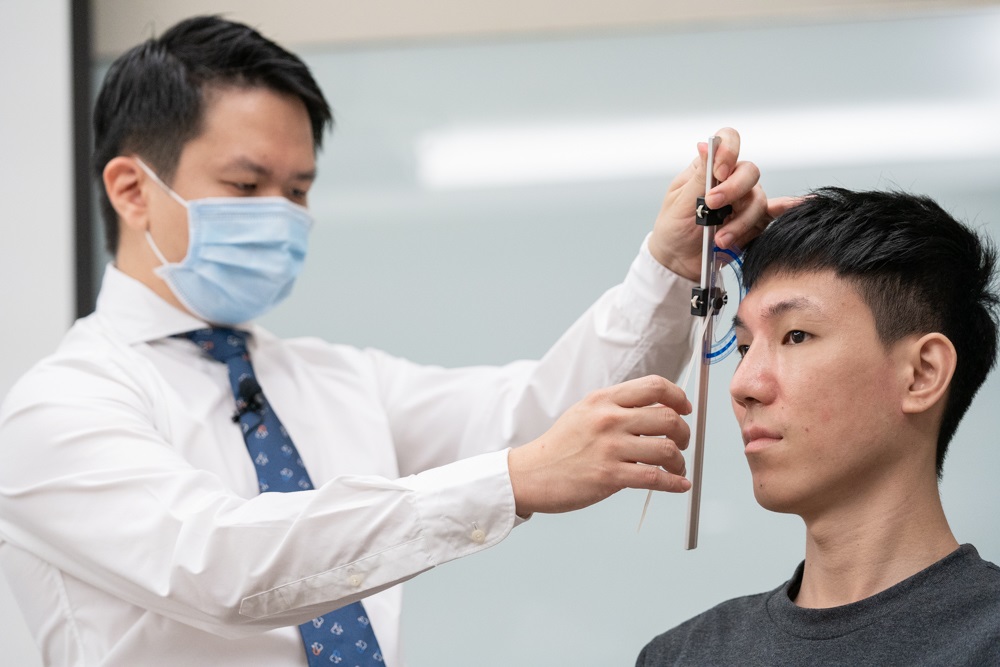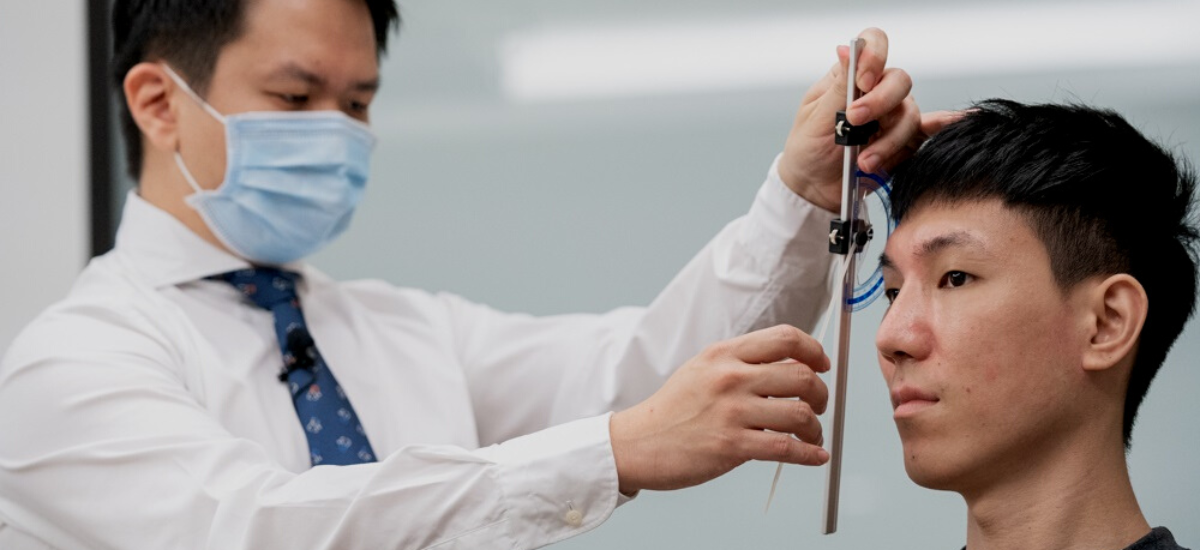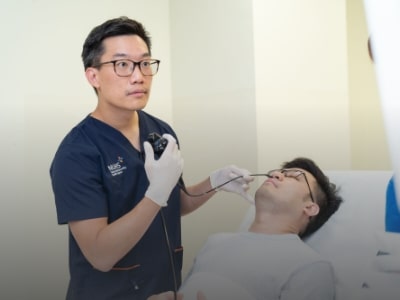Published on 30 August 2022
Ng Teng Fong General Hospital rolls out less invasive surgery techniques to improve post-operative outcomes for patients
For months, 29-year-old Loo Jia Heng could not eat hot meals or spicy foods. A fall in September 2020 broke his nose and left it crooked. The damage that was done obstructed his nasal passages, meaning that he had to settle for foods that were cold or at room temperature to prevent steam from blocking his nose. He also slept poorly at night due to breathing issues and had to prop himself high on pillows in order to get enough airflow.
To rebuild his crooked nose bridge with minimal trauma and enable him to regain his quality of life, Mr Loo underwent preservation rhinoplasty in May 2021. The technique was introduced by surgeon, Dr Ng Chew Lip, Senior Consultant, Otolaryngology – Head & Neck Surgery, Ng Teng Fong General Hospital (NTFGH).
Unlike traditional resection techniques for deformed nasal hSumps which involve the removal of a significant section of bone and cartilage from the nose bridge, preservation rhinoplasty is a less aggressive surgical method that retains as much of a patient’s own nose bridge as possible. Dr Ng also pioneered a new method of rebuilding the nose bridge, and the use of an instrument which he designed that caters to the different structure and size inherent in Asian noses.
In Mr Loo’s case, Dr Ng first used a T-shaped ruler-like instrument called a rhinoscale, which he designed, to measure the length and angles of his face, to ensure that the newly constructed nose bridge would be symmetrical.

He then used piezoelectric equipment to precisely ‘melt’ away the damaged bone while leaving the soft tissues intact, in a process known as rhinosculpting. Cuts made are more precise and refined and barely cause bleeding. To rebuild Mr Loo’s nose, Dr Ng used donated cartilage and a 3D-printed cartilage mould that he invented to customise the graft. Mr Loo’s nasal tip structure was reconstructed with the ‘Princess and the Pea’ graft developed by Dr Ng, which involves shaping cartilage in such a way to ensure better projection and definition of the tip, which is typically harder to achieve in Asians who have thicker nasal skin.
Though the surgery is more preserving and less destructive, it is also more technically challenging, explained Dr Ng. “Conventional rhinoplasty involves hammers and chisels used for bone-cutting and removal of segments of bone and cartilage. This may be more destructive, less precise and causes significant bleeding. Preservation rhinoplasty decreases post-operative swelling and bruising, which are common problems for such patients.” The method retains most of the nose bridge and thus, avoids the irregularities, deformities and hypersensitivity that is common after a traditional nasal deformity excision. Dr Ng and team are believed to be one of the first in Singapore and in Asia to adopt preservation rhinoplasty.
After the four-hour operation, Mr Loo’s recovery was swift and he was discharged within 24 hours. He experienced little to no pain throughout surgery and recovery. “My nose is fixed and I am breathing much better," he said.
In consultation with Dr Ng Chew Lip, Senior Consultant, Otolaryngology – Head & Neck Surgery, NTFGH.


